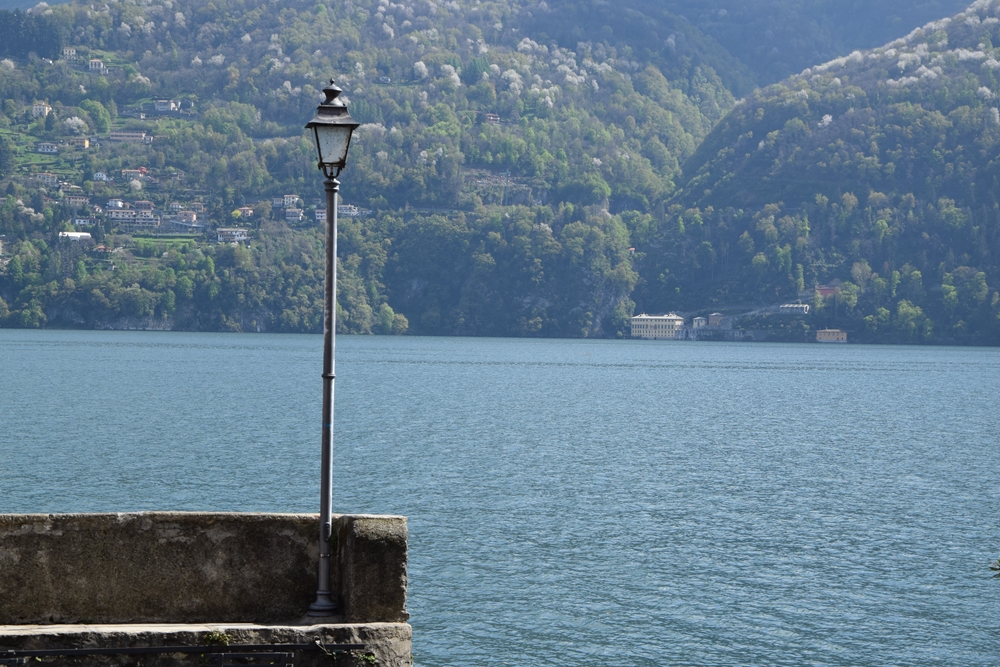
Già dal primo secolo d.C. Plinio il Giovane, il più illustre comasco dell’epoca romana, descrive il gusto della villeggiatura sul Lario come un piacere condiviso da molti altri ricchi cittadini, le cui ville e poderi costellavano le rive lariane. I testi classici lo definiscono come “mito del Lario”, un luogo favorito dal clima e dalla rigogliosa natura, ricco di paesi e contrade.
Il Lario fu scelto come privilegiata residenza fin dal Medioevo dai re barbarici che si sono succeduti dopo la caduta dell’impero Romano. Successivamente nel Rinascimento si riprende le tradizione classica e le sponde del lago si rinnovano dei fasti antichi con costruzioni, giardini, darsene e porticati.
Nel Settecento si diffuse in Europa la consuetudine del “Grand Tour”, viaggio che le persone colte intraprendevano in Italia per visitare la città, conoscere le opere d’arte, ammirare il paesaggio. Il Lago di Como fu una delle mete prescelte dai viaggiatori, in quanto luogo ameno, dai paesaggio dolci e dal clima mite. Alcune zone privilegiate del lago divennero un grande salotto aperto ed in barca si scambiavano visite da una riva all’altra, mentre la notte rifletteva sulle acque le luci delle feste.
La frequentazione internazionale caratterizza il Lario, si restaurano ville antiche e la costruzione di nuove sono spesso realizzate da aristocratiche famiglie europee.
Verso l’Ottocento le forme neoclassiche si imposero anche sulle rive del Lago di Como, espressione di una élite culturale e aristocratica aperta al pensiero illuminista e partecipe del rinnovamento politico della Repubblica Cisalpina.
Nella seconda metà dell’Ottocento la classe emergente di imprenditori industriali e la nuova ricca borghesia diffusero la residenza per le vacanze sulle rive del lago. Non è più l’eccellenza dei singoli luoghi a determinare la scelta del posto in cui costruire la propria dimora, perché ogni porzione di riva e tratto di panorama sono considerati appetibili.
La nuova borghesia, anche nelle forme, tentò di riproporre modi e stili di tutte le epoche passate. Attraverso queste forme si rievoca un’atmosfera, un momento storico, una suggestione artistica o letteraria: le forme contribuiscono a realizzare la scenografia in cui si nobilita l’emergente classe sociale. Architetture, giardini, scaloni, arredi, darsene, padiglioni sono interpretati come teatralità.
Since the first century A.D. Pliny the Younger, the most illustrious Como of Roman, describes the taste of the resort on the Lake as a pleasure shared by many other wealthy citizens, whose houses and farms dotted the shores of Lake Como. The classical texts describe it as “the myth of the Lario”, a place favored by climate and beautiful nature, rich countries and districts.
The Lario was selected as prime residence since the Middle Ages by the barbarian kings who succeeded after the Roman Empire fell. Later in the Renaissance recovers the classical tradition and the shores of the lake are renewed the ancient splendor with buildings, gardens, docks and porches.
In the eighteenth century spread throughout Europe the custom of the “Grand Tour”, traveling to the educated undertook in Italy to visit the city, to know the works of art, admire the scenery. Lake Como was one of the destinations chosen by travelers, as pleasant place, from the gentle landscape and mild climate. Some privileged areas of the lake became a large open living room and boat exchanged visits from one bank, while the night reflecting on the festive lights waters.
The international attendance characterizes Lario, it is restored old villas and the construction of new ones are often made from European aristocratic families.
Towards the nineteenth century neo-classical forms are also imposed on the shores of Lake Como, the expression of a cultural and aristocratic elite open to the Enlightenment thought and participant of the political renewal of the Cisalpine Republic.
In the second half of the emerging class of industrial entrepreneurs and the new rich and middle class spread the holiday residence on the banks of the lake. No longer is the excellence of individual locations to determine the choice of the place in which to build their new home, because each portion of the shore and Panorama section are considered attractive.
The new middle class, even in the forms, attempted to revive the ways and styles of all eras past. Through these forms it evokes an atmosphere, a historical moment, an artistic or literary suggestion: forms contribute to achieving the set in which it ennobles the emerging social class. Architecture, gardens, staircases, furniture, docks, pavilions are interpreted as theatricality.


